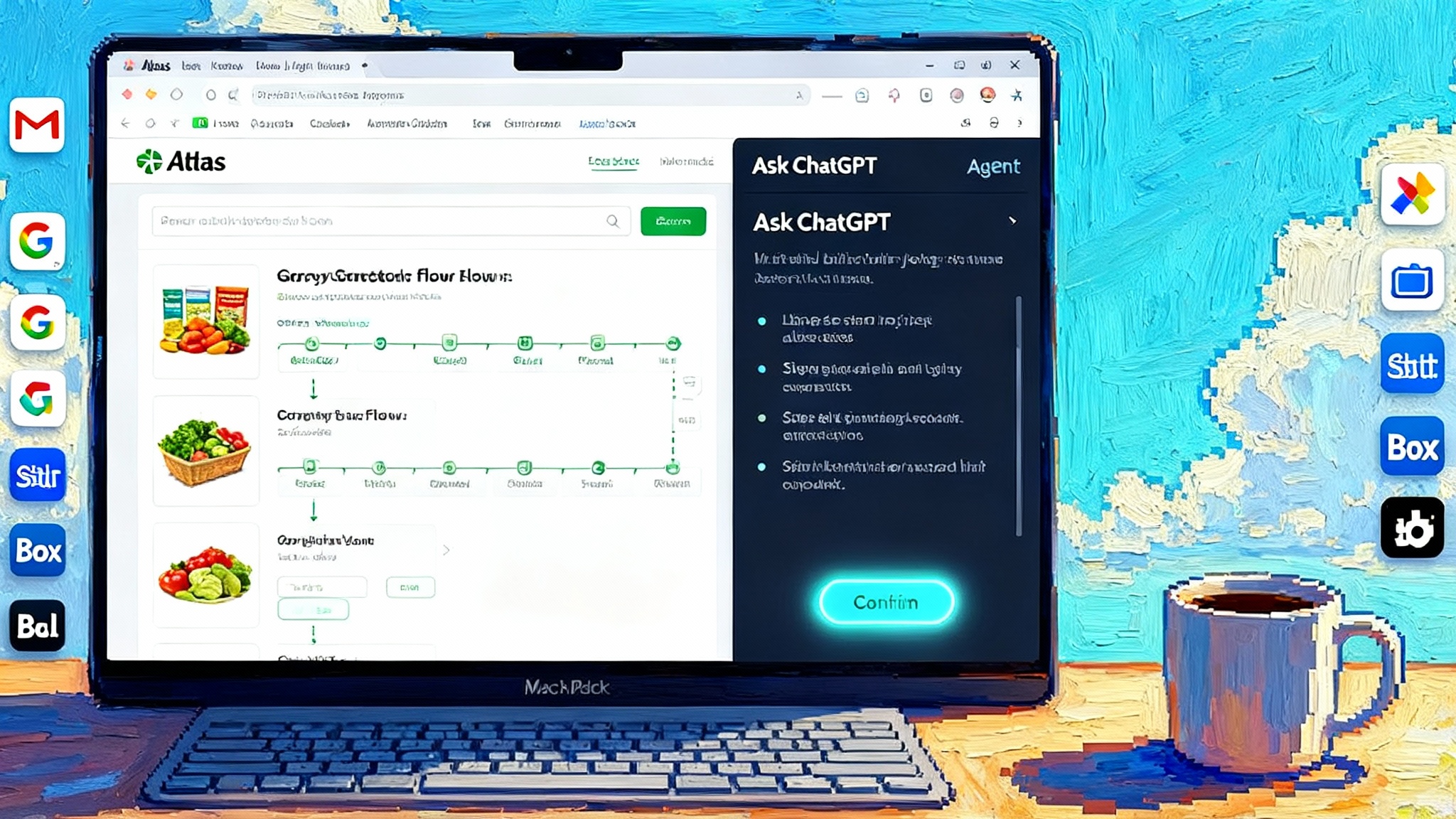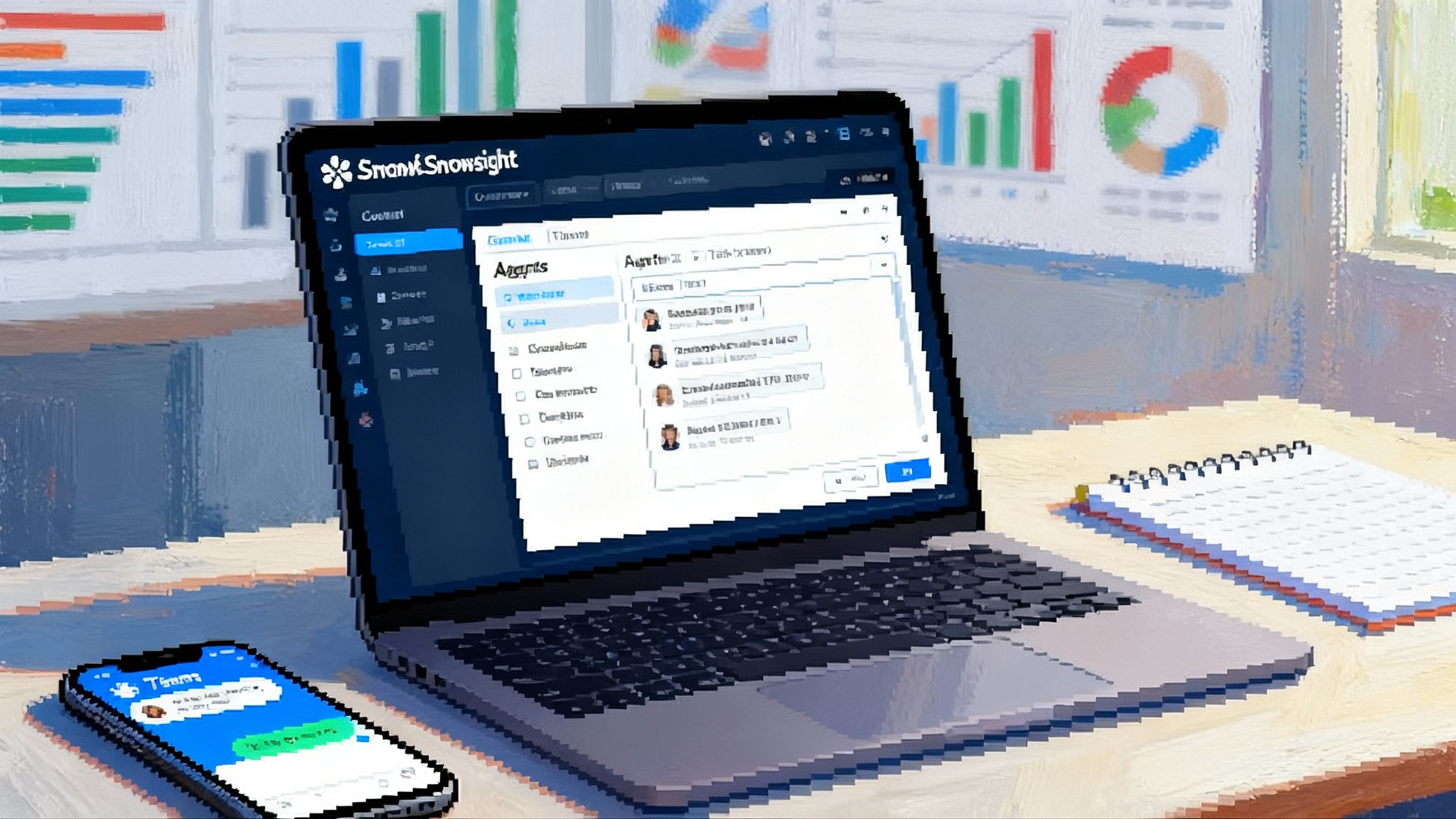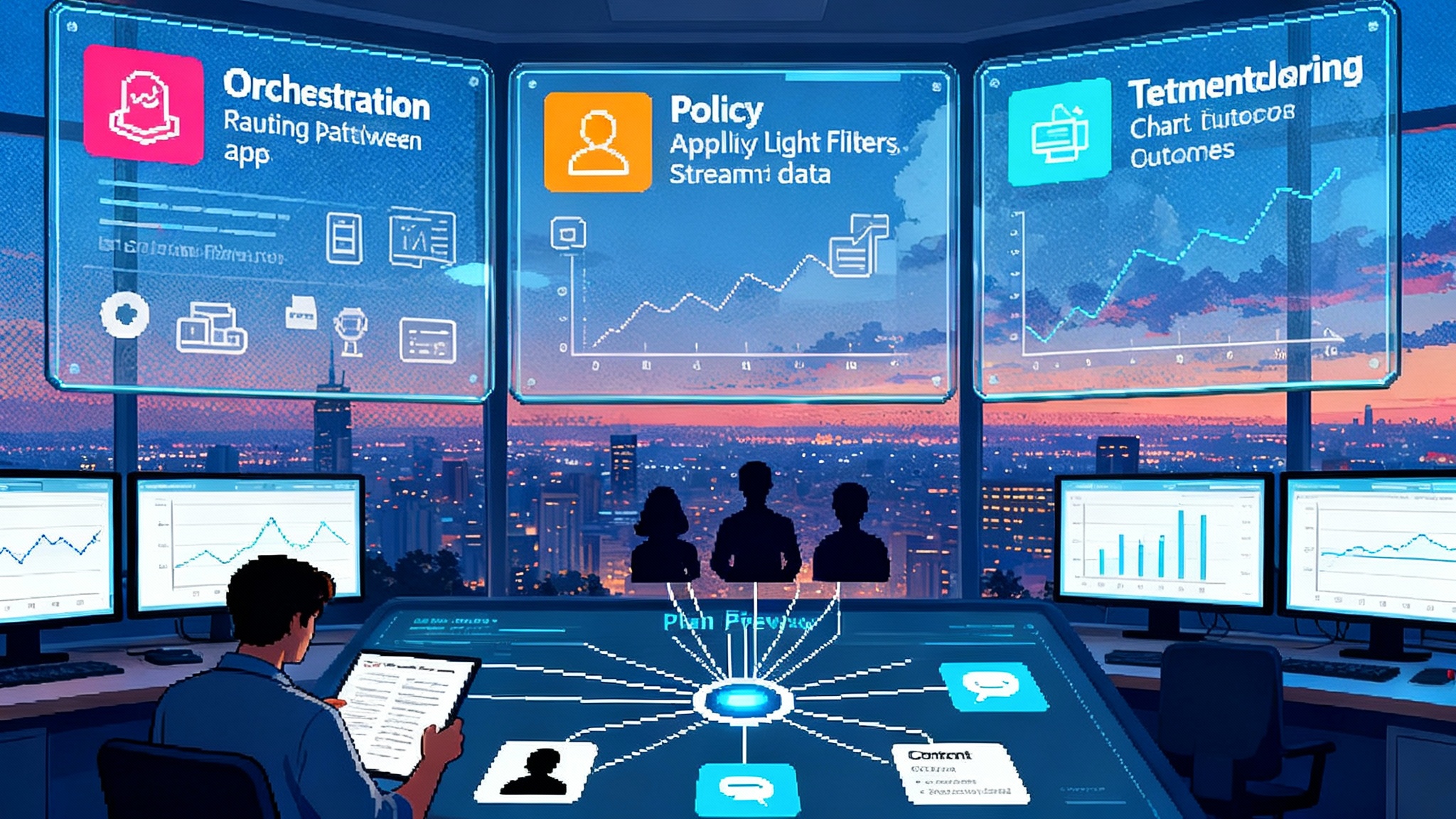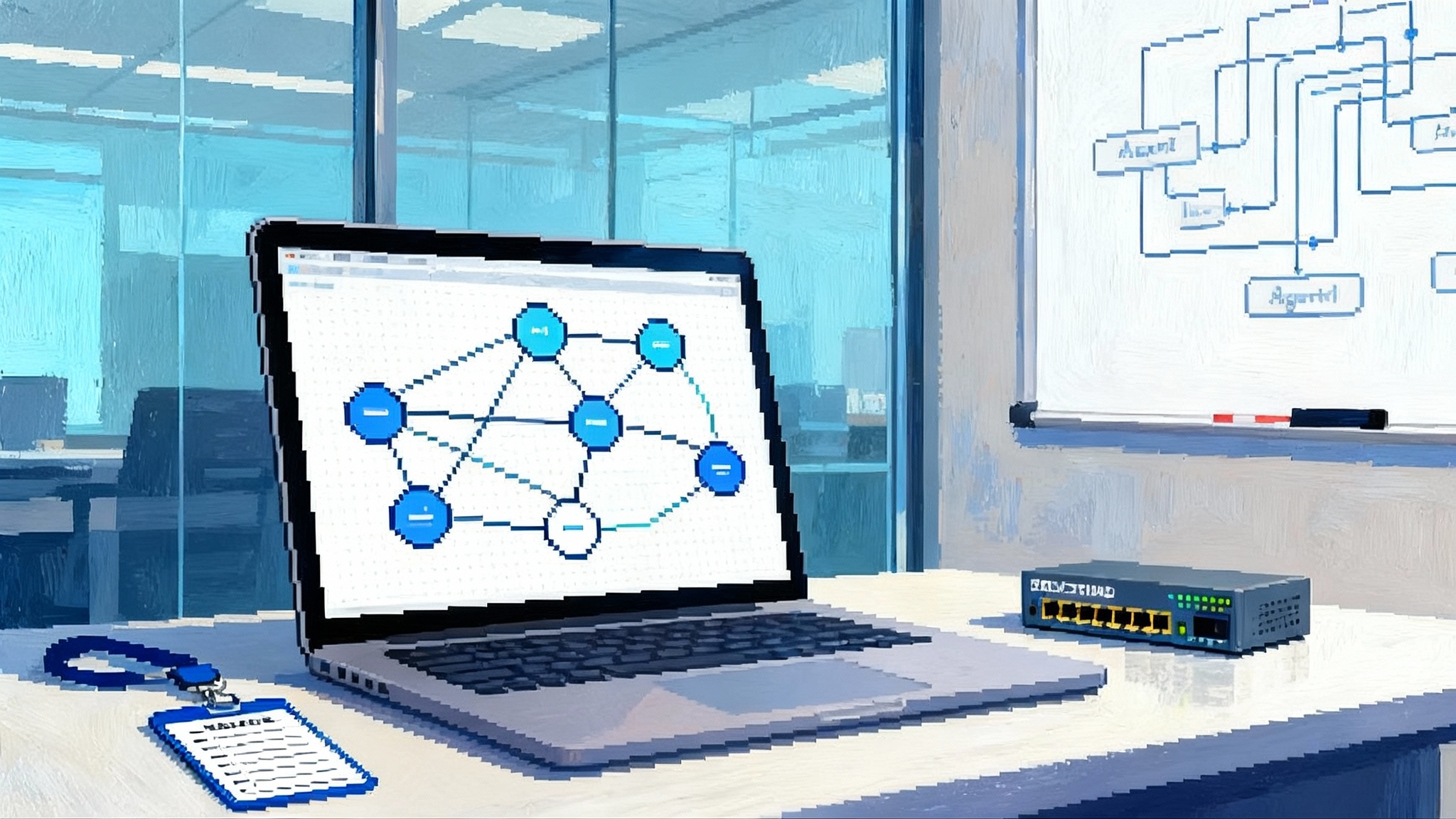ChatGPT Agent 5.1 makes Atlas your daily operating system
OpenAI's GPT-5.1 profiles and the Atlas browser turn ChatGPT from a demo into a dependable, permissioned agent that plans, browses, and acts across your apps. See what changed, what works now, and how to use it safely.

The news, clearly stated
On November 12, 2025 OpenAI rolled out GPT-5.1, a paired update that improves two distinct reasoning profiles: Instant and Thinking. The pitch is simple. Instant answers faster while following directions more faithfully. Thinking allocates more effort to harder problems without wasting time on easy ones. The result is a ChatGPT that feels both warmer in tone and steadier in judgment, especially when it needs to reason before it acts. See the official details in the GPT-5.1 announcement.
Three weeks earlier, on October 21, 2025, OpenAI launched Atlas, a desktop web browser with ChatGPT built in. Atlas makes the agent native to the place where work actually happens: inside tabs, accounts, and web apps. It also introduces an agent mode that can click, type, and navigate in your current browsing session, with explicit pauses for confirmation on sensitive steps. Read the product outline in Introducing ChatGPT Atlas.
Together, those launches build directly on July’s debut of ChatGPT agent mode. If July was the proof of concept that an agent can work on your behalf, October and November turned it into a daily tool across browsing and connected accounts.
What actually changed in GPT-5.1
Most of the conversation around big model updates tends to fixate on benchmark charts. What matters for agents is different. Can the model interpret instructions on the first pass. Can it decide when to think longer instead of thinking longer by default. Can it explain what it is doing while it does it. GPT-5.1’s two profiles are tuned for those jobs.
- Instant as your default driver. Think of Instant as a skilled commuter who knows the city. It makes quick turns, follows your directions, and still decides when to slow down before a tricky intersection. In practice, you see fewer misreads of your prompt and fewer overconfident half answers.
- Thinking as your expert navigator. Thinking behaves like a colleague who reaches for scratch paper when the problem warrants it. It now varies its thinking time more precisely. That means more time on a gnarly multi step research task, less time on summarizing a single page.
- Automatic routing. You can let ChatGPT pick the right profile through the Auto setting. For most users, that reduces the mental overhead of model selection and quietly raises the completion rate on longer tasks.
The key outcome is not a flashy demo. It is reliability. You can hand the agent a plan that spans several apps and expect it to get through the middle steps without wobbling.
The browser is the interface
Agents learned to browse in operator style sandboxes. Atlas moves the browsing into your browser, which changes user trust and speed in two ways.
-
Context lives where you work. The agent operates inside your current tab and session. If you are already signed in to your airline or payroll site, it can see the page and propose concrete actions. You approve the sequence, then watch it click through. No more copying links between a chat window and a separate virtual screen. For a deeper dive on why the browser matters, see how the browser becomes an AI runtime.
-
Guardrails fit the environment. Atlas adds safety constraints that are intuitive to non technical users. You can run the agent in logged out mode to keep it away from your signed in cookies. It pauses on sensitive sites and asks for a handoff when a password is needed. It cannot install extensions or run code inside the browser. These limits narrow the blast radius if something goes wrong.
For most people, the mental model shifts from talking to a chatbot to directing a helper inside the browser. That shift matters because so many workflows are web native: forms, carts, dashboards, knowledge bases, calendars.
Connectors become permissioned rails
The other half of the story sits outside the browser. ChatGPT now plugs into a roster of permissioned connectors for Gmail, Google Calendar, Google Drive, Microsoft Outlook, OneDrive, Teams, and SharePoint, plus services like Box, Dropbox, GitHub, Notion, HubSpot, and others. Each connector uses the account’s own permissions through secure sign in, so the agent only sees what you can see. Workspace administrators can enable and restrict specific connectors, apply role based access controls, and log usage for compliance.
Two practical points stand out:
- Read only by design for most sources. Connectors typically expose search and retrieval. When the agent needs to act, it switches to the browser and executes steps you can watch. That keeps write actions in the environment where you already review them.
- Smarter defaults for common Google connectors. Once you connect Gmail or Google Calendar, ChatGPT can reference them automatically when relevant. You do not need to pick sources every time you ask a question. This is one of the upgrades that moves the agent from a setup chore to a ready tool.
The net effect is a set of rails. Your organization defines what the agent may reach. You approve actions at the moments that matter.
Workflows that now cross the reliability threshold
Below are examples tested end to end with GPT-5.1 profiles, Atlas, and permissioned connectors. The notable change is not that these workflows are possible. It is that they complete with one or two clean handoffs and no brittle prompt acrobatics.
1) Account research to a shareable brief
- Ask. Pull this week’s competitor announcements and analyst notes, cross reference with our SharePoint and Google Drive materials, and draft a one page brief. Cite links and suggest three follow up questions.
- How it runs. The agent searches your connected drives for context, gathers public updates, drafts a brief, then proposes a table of contents. If you accept, it expands each section and assembles the result as a Google Doc in your team folder. If a site requires login, Atlas pauses to let you sign in through takeover mode.
- Why it clears the bar now. Instant keeps the drafting snappy. Thinking kicks in on the synthesis, especially when the ask includes new claims that must match internal documents.
2) Sales meeting prep across inbox and calendar
- Ask. Summarize the last five emails from each attendee for tomorrow’s two client calls, pull their LinkedIn titles, and add three tailored discovery questions to the calendar invites.
- How it runs. The agent searches your Gmail or Outlook connectors for recent email threads, extracts relevant issues, fetches public titles, then proposes discovery questions and inserts them into the invite descriptions. You approve the insert step inside Atlas.
- Why it clears the bar now. The model better understands the difference between a summary for you and a draft for a client facing calendar, and it pauses before it edits anything.
3) Recruiting pipeline triage
- Ask. From our Box folder and Notion database, identify candidates with published Rust code, summarize the strongest three, and create a comparison table with links and notes. Email me the table and add a debrief block to the hiring doc.
- How it runs. The agent uses connectors to retrieve artifacts, compiles a scorecard, and drafts an email you can send or copy. It then opens your hiring doc in Atlas and inserts the debrief with a single visible edit.
- Why it clears the bar now. The chain is long but predictable, which is where Instant plus targeted Thinking performs best.
4) Finance close checklist
- Ask. Check the last month’s invoices from Dropbox against the entries in our accounting portal. Flag any mismatches above 1,000 dollars and produce a CSV with columns ready for import.
- How it runs. The agent reads invoices from the connector, opens the accounting portal in Atlas, and steps through a read only reconciliation flow where you approve each sensitive navigation. It then composes a CSV in chat and offers to attach it to the accounting system if your policy allows write back.
- Why it clears the bar now. The most error prone part is jumping between sources. Atlas reduces that friction by keeping the agent in the same signed in session you already use.
5) Travel planning with actual bookings
- Ask. Book flights for a team offsite from New York and Austin to Denver January 27 to 30. Use existing airline credits first and confirm seat choices with me before payment. Add hold times and cancellation reminders to our shared calendar.
- How it runs. The agent searches options, opens airline sites, applies credits after you take over for authentication, and pauses at purchase for explicit confirmation. It then adds calendar entries with reminders. If you prefer, you can run the entire flow in logged out mode and do final checkouts yourself.
- Why it clears the bar now. The combination of confirmations, logged in or logged out modes, and visible actions leads to fewer surprises.
Safety controls, explained without euphemism
Agent systems face a narrow set of real risks. Prompt injection attempts to redirect the agent. Sensitive actions can have outsized consequences, from a mistaken email draft to a transfer on a financial site. Leaky permissions can expose more than intended. GPT-5.1 and Atlas introduce controls that address those risks under practical use.
- User confirmations for high impact actions. The agent pauses before edits, sends, or purchases. You see the proposed action, then approve or decline. This is the single most important safety affordance because it aligns with existing habits like reviewing a draft or confirming a transaction.
- Logged in and logged out modes in Atlas. Logged out mode prevents the agent from using your existing cookies. It lowers the chance that a malicious instruction on a page could act on your identity. Use this when exploring unknown sites.
- Takeover mode for credentials. If a task requires a password, the agent hands control to you. While you are typing, screenshots are not captured. Control returns to the agent after the sensitive step.
- Connector permissions and admin policy. Connectors use the identity and scopes you authorize. Workspaces can enforce role based access, decide which connectors are allowed, and maintain allowlists and blocklists for agent browsing. That brings agents into the same governance surface that already exists for identity and data access.
- Site level restrictions and allowlisting. Enterprises can block domains for the agent or allowlist the agent’s signed identity in their web application firewalls. This reduces accidental automation on sensitive websites and enables safer automation on internal tools.
- Monitoring for prompt injection and refusal patterns. The stack includes detection and response patterns that try to spot malicious instructions in web pages and emails. These measures are useful, but they are not perfect. The practical mitigation is a habit: ask the agent to show its plan and the origin of each step, then confirm actions at the edges.
What remains risky. Any task that reads sensitive data and writes to a target without your approval. Any flow that mixes personal and work accounts in the same session. Any long running automation that accumulates state across sites without checkpoints. The fixes are concrete: keep clear approval gates, separate accounts using logged out mode, and schedule long tasks with time bounded scopes.
Why this is the inflection point
From July to October to November, the story has condensed into a stack that looks like an operating system for agentic work.
- Reasoning profiles that fit the task. Instant and Thinking reduce the need to handpick a model for every request.
- A native place to act. Atlas turns the browser into the agent’s window, which is where real work and real risk live.
- Permissioned rails across your apps. Connectors bring your documents, mail, and calendars into the conversation without breaking your existing access controls.
That combination produces something we have been missing since the first wave of agent demos. A dependable way to ask for multi step outcomes that cross the open web and the private workspace. With that in hand, two near term effects are likely.
-
A wave of vertical agent apps. Builders will use the agent interfaces and connector ecosystem to ship focused tools that do one job reliably: invoice reconciliation, competitor tear downs, new hire onboarding, grant applications, claim audits. These apps will look more like workflows and less like general chat. They will live inside Atlas or hand off into it for the steps that require a browser. For an adjacent example of platform alignment, see how AI coworkers in Microsoft 365 are becoming first class citizens.
-
Light touch marketplaces. Instead of sprawling stores, expect curated catalogs of agent templates, connector packs, and reviewable action macros. The winning pattern will be simple: minimal install, clear scopes, and obvious checkpoints. On the infrastructure side, the same spirit is turning Edge turns MCP agents into services so that enterprise policies and routing live closer to where agents execute.
Enterprises will pair those with governance patterns that look familiar. Identity and permissions stay central. Browsing allowlists and blocklists mirror existing security posture. Compliance logging captures the context needed for audits. The difference is that users will be able to complete the last mile of multi app work without opening a dozen tabs and copy pasting between them.
A practical playbook for teams
If you own productivity, security, or tooling in your company, you can move this from experiment to standard within a quarter.
In the first 30 days
- Enable Atlas for a small group. Ask them to run in logged out mode on untrusted sites and to use takeover mode for any credentials.
- Turn on a short list of connectors with the least sensitive scopes, for example calendar and read only document stores.
- Define three agent templates that match common work: meeting prep, competitive brief, support triage. Include approval steps and target outputs.
In days 31 to 60
- Expand connectors to email and code or design repositories where helpful. Add role based access controls and review the default scopes with security.
- Pilot allowlists and blocklists for the agent. Start with financial sites and admin consoles blocked by default.
- Measure outcomes. Track completion rate, average clarifications per task, and time saved compared to a manual baseline.
In days 61 to 90
- Roll out to a larger group with training on three practices: how to read the agent plan, how to approve actions with confidence, how to switch modes when dealing with sensitive data.
- Add recurring schedules for stable tasks. Keep the scope narrow, for example weekly briefings, document cleanup, or report extraction.
- Establish a review rhythm. Security and operations should look at logs and a small sample of sessions to spot failure modes and prompt injection attempts.
What builders should ship next
The stack now favors product teams that turn ambiguous goals into clear, checklisted plans. Good vertical agents will:
- Start from an output specification, not a vague prompt. Define the file type, the fields, and the acceptable sources.
- Use connectors for retrieval and Atlas for actions that need a human eye. Ask for permission at obvious boundaries: edits, sends, and purchases.
- Cache small state in files or comments that users can see. Avoid fragile hidden memory.
- Offer steerable controls. Let users choose preferred sources, brand tone, or action thresholds. Keep those controls one click away.
- Fail safe. If a page refuses to load or a connector times out, degrade gracefully with a partial result and a short list of next steps.
The bottom line
ChatGPT Agent 5.1 is not a flashy new trick. It is a sturdier engine, connected to your apps, and housed in a browser that knows what it should and should not do. That combination finally crosses the reliability threshold for everyday work. The payoff is simple. You write the goal once, watch the steps you care about, and get a finished result that is ready to ship. When an agent becomes this dependable in the place you already work, it does not feel like a demo anymore. It feels like your daily operating system.








